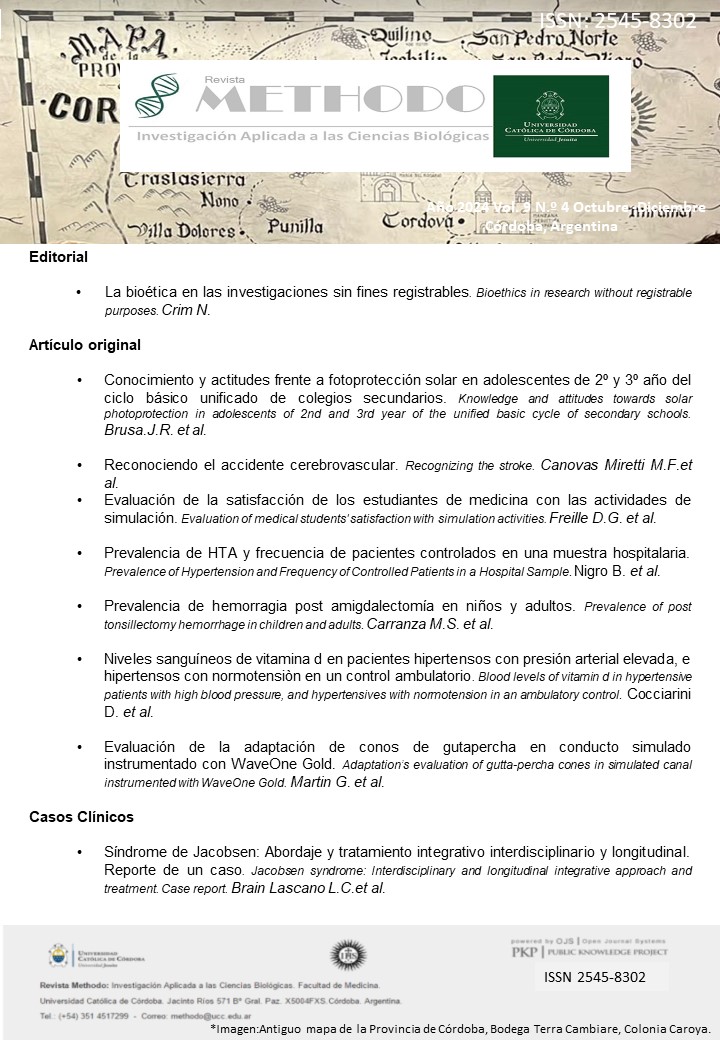Prevalence of post tonsillectomy hemorrhage in children and adults
DOI:
https://doi.org/10.22529/me.2024.9(4)06Keywords:
Tonsillectomy, bleeding, complicationsAbstract
INTRODUCTION: Tonsillectomy is the oldest and most common procedure in Otorhinolaryngology. Its implementation is not free of complications, the most serious being bleeding from the surgical bed, which may require hospitalization and/or reintervention.
OBJECTIVE: Determine the prevalence of postsurgical bleeding in tonsillectomy patients with or without adenoidectomy.
MATERIALS AND METHODS: Observational, retrospective and descriptive study that was carried out in the Otorhinolaryngology service of the Reina Fabiola University Clinic and in which tonsillectomy patients were included from January 1, 2017 to December 31, 2021. Study variables: age, sex, presence of bleeding, time of onset of bleeding, need for reintervention, reason for surgery, surgical technique used and hemostasis, from which tonsillar fossa they bled, if there was a transgression of measures hygienic diet or was it spontaneous bleeding. The statistical analysis for the quantitative variables was calculated measures of centralization and dispersion (mean and standard deviation), and for the categorical variables the absolute and percentage distributions were calculated.
RESULTS: A total of 1392 cases were studied, of which 27 (1.94%) presented bleeding. The mean age of the patients was 19.7 years, with a standard deviation (SD) of 11.2 years. Of these patients, 18 (66.7%) were male. Of all the bleeding cases, 22 (81.5%) were triggered spontaneously. Bleeding occurred most frequently before 48 hours postoperatively in 13 (50%) patients. Seventeen (63%) patients required reintervention to control bleeding. The most used tonsillectomy surgical technique was the technique without the use of thermal energy.
CONCLUSIONS: The study carried out found a prevalence of postoperative bleeding of 1.94%, especially in young men. Most bleeding occurred within the first 48 hours, with some patients requiring surgical reintervention. The most used surgical techniques were cold dissection and electrocautery, using compression, suture and bipolar cautery for hemostasis.
Published
How to Cite
Issue
Section
License
Copyright (c) 2024 Methodo Investigación Aplicada a las Ciencias Biológicas

This work is licensed under a Creative Commons Attribution-NonCommercial-ShareAlike 4.0 International License.




















